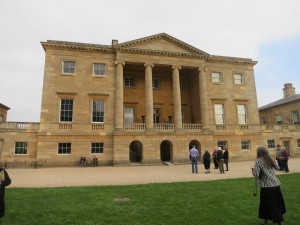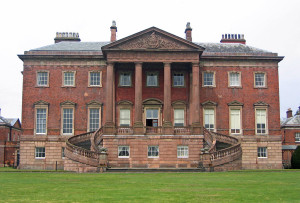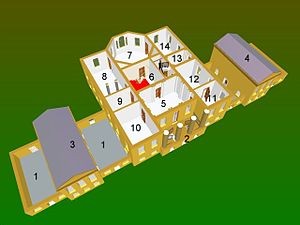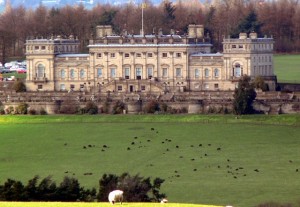I’ll bet if I say “Robert Adam” most readers and writers of Regency romance will know that he was a famous architect who greatly influenced architecture, interior design, and furniture design of the times–mostly Georgian times, but I imagine my Regency characters in houses designed by Adam all the time.
On my England trip last year, though, I learned of another architect of the same period, even more prolific than Adam–John Carr.
John Carr designed Basildon Park, one of the houses we visited on the Duke of Wellington Tour and one I blogged about here shortly after. He, too, was a neoclassicist like Adam.

If you saw this, would you guess it was by Robert Adam?

It’s an interior of Basildon Park by John Carr.
Carr was born in Yorkshire and decided to remain there rather than settle in London, thinking there was plenty of wealth in the area to support his business. He lived into his eighties and produced an incredible number of projects.
Tabley House is another house designed by John Carr similar to Basildon Park.

One characteristic of both these houses is that you have to go up stairs to reach the front entrance which is on the first floor, not the ground floor. I thought that was rather grand when we visited Basildon Park.
In my current work in progress, Genna’s story in the Scandalous Summerfields series, I used Basildon Park as my model for Summerfield House. It was especially helpful to find floor plans online.

There was one famous house that both John Carr and Robert Adam designed–Harewood House near Leeds.

Carr designed the building and Robert Adam, the interiors. Adam also slightly altered Carr’s exterior, including internal courtyards.
Who is up for visiting all these houses? Don’t you sometimes wish we really had a Transporter like in Star Trek?






